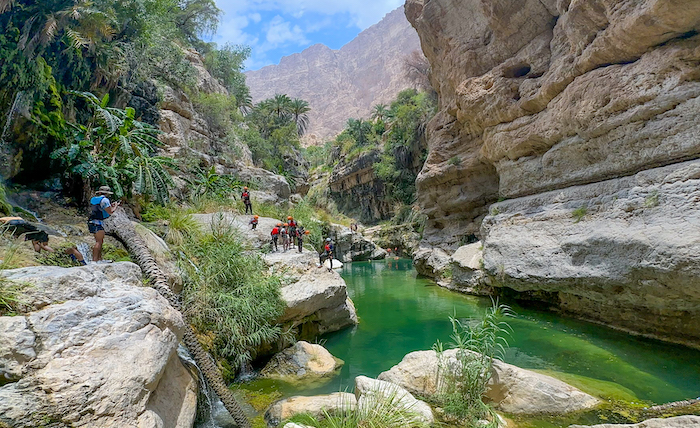
Muscat: The Niyabat of Wadi Tiwi in the Wilayat of Sur in the South Al Sharqiyah Governorate is witnessing a remarkable diversity in its development projects, which has resulted in a high demand of visitors during the different tourist seasons due to its distinctive sites that combine the diversity of nature and historic, archaeological sites.
Saeed bin Hareb Al Obaidani, Director General of Tourism Development at the Ministry of Heritage and Tourism, said that the geographical location of the Niyabat of Wadi Tiwi is primarily a tourist site. Its most prominent tourist attractions are Bubbles Beach, Wadi Shab, the village of Mibam, the archaeological village of Al Jahl, the fort of Bin Muqram, the tombs of Kabikab and the archaeological falaj Al-Jillah. In addition to the ancient city of Qalhat, which has been included in the UNESCO World Heritage List.
Al Obaidani added that Wadi Tiwi has several hotel facilities, such as guest houses, green lodges, rest houses, and farms. During the summer tourist season, several cultural events are being implemented to introduce tourists and visitors to customs, traditions, culture, and heritage.
Al Obaidani pointed out that there is one hotel apartment project in the Niyabat, while the number of green inns reached four projects and three guest house projects, and the number of rooms reached about 20 rooms. Work is currently underway on several tourism and investment proposals.
Salama bint Nasib Al Farsi, a resident of the Niyabat, said that the splendour of Wadi Tiwi is evident in the diversity of its nature and archaeological sites, which makes it an important destination for lovers of Omani adventure, history and culture. It contains many archaeological sites dating back to ancient civilisations.
Al Farsi indicated that visitors to Wadi Tiwi can enjoy various activities, including viewing natural landscapes, visiting archaeological sites, exploring the stories and history of ancient civilisations, and enjoying hiking and mountain climbing trips to learn about different terrains. In addition to boat trips, participation in cultural events, photography to document the beauty of nature and archaeological details in the region, and interaction with the local community to learn about the lifestyle of the residents of the villages adjacent to the prosecution.